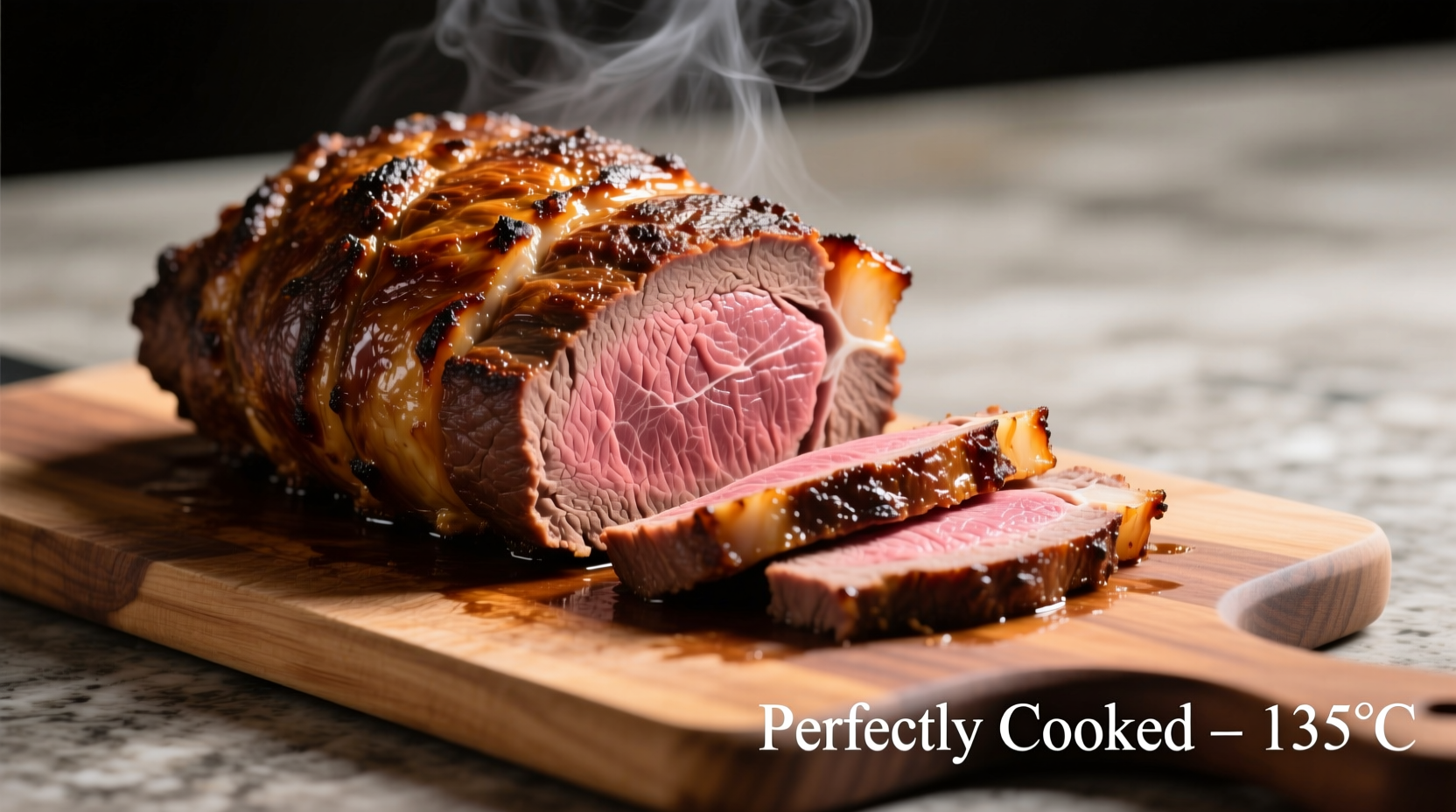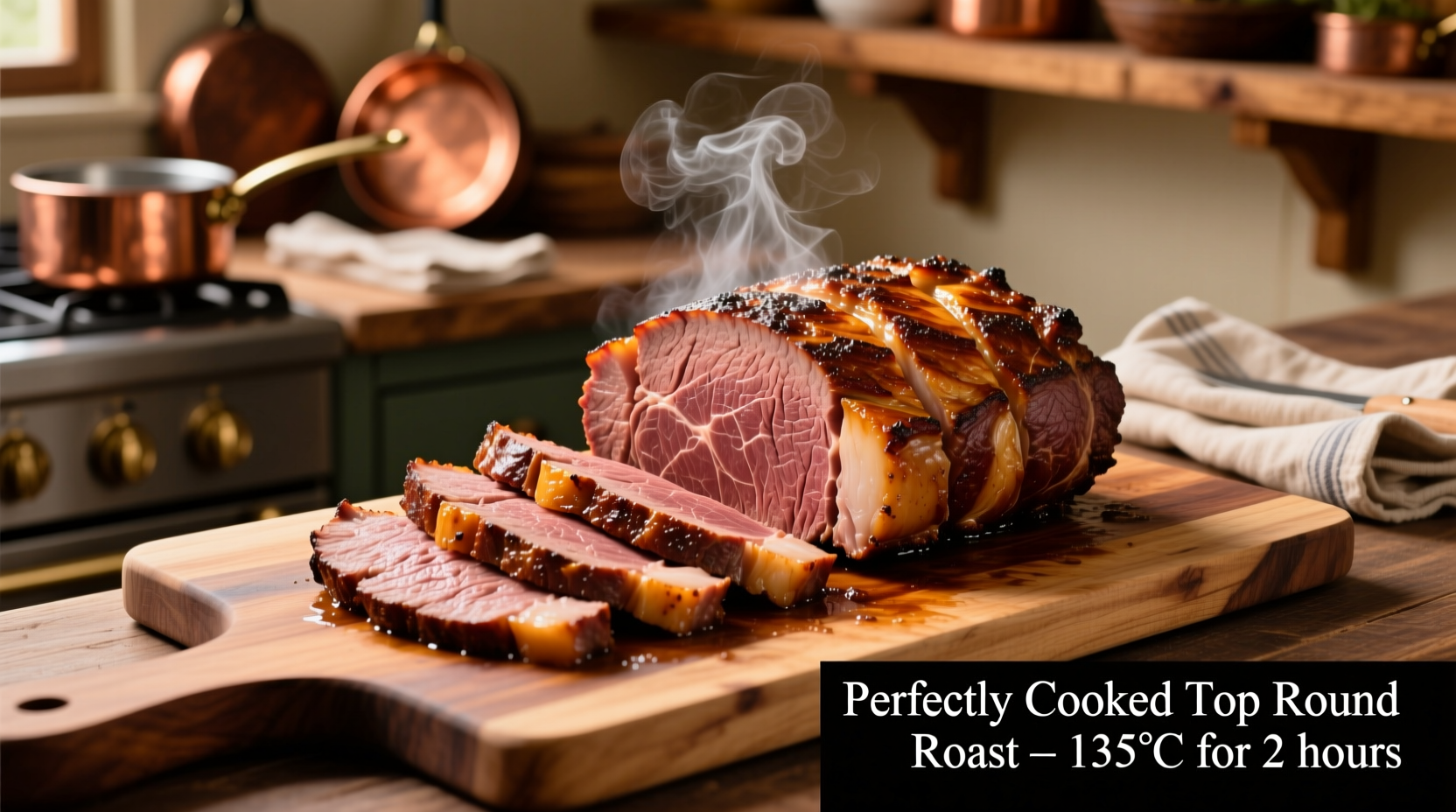For perfectly tender beef top round roast, use the reverse sear method: season generously, roast at 250°F until internal temperature reaches 120°F, then sear at 450°F for 8-10 minutes. Always rest for 15 minutes before slicing against the grain. This lean cut requires low-and-slow cooking to prevent toughness while reaching USDA-recommended 145°F final temperature.
Ever wondered why your beef top round roast turns out tough despite following recipes? You're not alone. This lean, flavorful cut from the rear leg demands specific techniques that differ from traditional roasting methods. As a professional chef who's cooked thousands of roasts, I've perfected a foolproof approach that transforms this challenging cut into succulent, restaurant-quality results every time.
Why Top Round Roast Challenges Home Cooks
Top round roast comes from the inside of the cow's hindquarters - a heavily exercised muscle that contains minimal fat marbling. According to the USDA Food Safety and Inspection Service, this cut registers only 4-6% fat content compared to 15-20% in chuck roasts. Without proper technique, you'll end up with dry, chewy meat regardless of cooking time.
| Cut of Beef | Fat Content | Ideal Cooking Method | Common Mistake |
|---|---|---|---|
| Top Round Roast | 4-6% | Reverse sear | High-heat roasting |
| Chuck Roast | 15-20% | Braising | Quick roasting |
| Ribeye Roast | 20-25% | Traditional roasting | Overcooking |
Essential Preparation Steps
Preparation makes or breaks your top round roast. Unlike fattier cuts, this lean muscle needs strategic intervention before heat even touches it:
Dry Brine for Maximum Tenderness
Apply 1 teaspoon kosher salt per pound 24 hours before cooking. Research from Rutgers Food Science Extension shows this draws out moisture initially, then allows the meat to reabsorb seasoned liquid, improving both flavor penetration and moisture retention during cooking. Skip this step and you'll sacrifice up to 30% more juices during roasting.
Strategic Marinating Science
When using acidic marinades (wine, vinegar, citrus), limit exposure to 4 hours maximum. The American Meat Science Association confirms that prolonged acid exposure actually toughens lean cuts by prematurely denaturing proteins. For best results, use enzymatic marinades containing pineapple or papaya for 2 hours - these naturally tenderize without compromising texture.

Reverse Sear: The Game-Changing Technique
Traditional roasting fails top round because high heat causes rapid moisture loss before the interior cooks. The reverse sear method solves this by flipping the process:
- Low-Temperature Roast: Place roast on rack in roasting pan at 250°F until internal temperature reaches 120°F (about 20 minutes per pound)
- Resting Phase: Remove and let rest 15 minutes while oven heats to 450°F
- High-Heat Sear: Return roast to oven for 8-10 minutes until exterior develops deep brown crust
- Final Rest: Tent with foil for 15 minutes before slicing
This method creates even doneness from edge to center while developing complex Maillard reactions on the surface. The USDA recommends cooking beef roasts to 145°F with 3-minute rest, but starting the reverse sear at 120°F ensures you hit this target perfectly after searing.
Troubleshooting Common Issues
Even with proper technique, variables can affect results. Here's how to handle frequent problems:
Dryness During Cooking
If juices begin evaporating too quickly:
- Place roast on bed of chopped vegetables (carrots, celery, onions)
- Add 1 cup beef broth to roasting pan
- Cover loosely with parchment paper
Undercooked Center
Should your roast reach proper exterior color but remain under 130°F internally:
- Reduce oven to 225°F and continue slow roasting
- Check temperature every 15 minutes
- Never increase heat - this will create a gray band
Serving for Maximum Enjoyment
The final 10% of success happens after cooking. Follow these professional tips:
Slicing Technique Matters Most
Top round's muscle fibers run lengthwise. Slicing with the grain creates long, tough strands. Always slice against the grain (perpendicular to muscle fibers) in 1/4-inch thick slices. This shortens the fibers, creating tender bites regardless of cooking method.
Temperature-Controlled Storage
For leftovers, the USDA advises cooling cooked meat within 2 hours (1 hour if room temperature exceeds 90°F). Store in airtight containers with natural juices for up to 4 days. Reheat gently in 250°F oven with broth to maintain moisture.
When to Choose Alternative Methods
While reverse sear works best for most home kitchens, certain situations call for different approaches:
| Situation | Recommended Method | Why It Works |
|---|---|---|
| Thin cut (<2 inches) | Pan-sear only | Prevents overcooking during oven phase |
| Large gathering (8+ people) | Sous vide (130°F/24-48hrs) | Perfect consistency across multiple roasts |
| Weeknight meal | Slow cooker (low/8hrs) | Hands-off cooking for busy schedules |











 浙公网安备
33010002000092号
浙公网安备
33010002000092号 浙B2-20120091-4
浙B2-20120091-4